MB Stories
Interim Budget 2024 – Recommendations and expectations
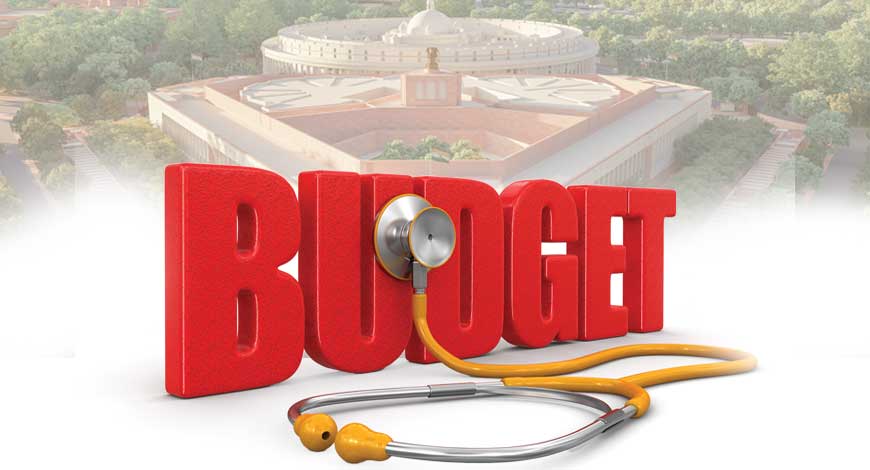
The Union Budget FY25 being presented in the Parliament by Finance Minister, Nirmala Sitharaman, on February 1, 2024 will be an interim budget. It does not entail any significant announcements. Its purpose is to meet the government’s expenditure until a new government takes charge.
The Finance Ministry had begun the process of preparing the interim budget in September 2022. It sought inputs on expenditure from various ministries and departments. These meetings discussed the fund requirements for different categories of expenditures and review the receipts of ministries. Pre-budget recommendations were made by the respective associations too.
Expectations
The healthcare sector has emerged as one of the fastest-growing segments, with the provider segment crossing the USD 132-billion mark, growing at a CAGR of 16–17 percent.
The Indian healthcare sector expects both structural and fiscal reforms in the upcoming interim budget, and expects the finance ministry to go an extra mile to further strengthening the sector.
The hospital sector, constituting 80 percent of the total healthcare market, expects a push to healthcare insurance, medical travel value, the establishment of a regulator, import duty rationalization on medical equipment, and price rationalization.
The Union Minister of State for Tourism Shripad Naik has committed that India is working on a new tourism policy. And the government plans to include subsidies and benefits for medical tourists in the upcoming budget. India is progressing in promoting health and wellness tourism and moving toward a global health destination, said the minister.
Low penetration of health insurance remains a major pain point. The sector expects widening of Ayushman Bharat – Pradhan Mantri Jan Arogya Yojna (PMJAY) on the one hand and a reduction of tax on healthcare insurance premiums on the other.
Overall, experts expect that the government will take some additional measures to create a new healthcare economy in the country.
The full budget for the fiscal year 2024-25 will be presented after the formation of the new government following the general elections.
PRE-BUDGET RECOMMENDATIONS
The Association of Indian Medical Devices Industry (AiMeD) has proposed the government address the soaring import bill, which currently stands over ₹63,200 crore. Rajiv Nath, Forum Coordinator at AiMeD, emphasized the need for the government to withdraw duty exemption notifications on medical devices and provide nominal protection to neutralize competitiveness disabilities in manufacturing medical devices in India.
Additionally, the industry seeks a phased approach to custom duty increases on critical components, ensuring the viability of manufacturing and avoiding erosion of competitiveness with zero-duty free trade agreement (FTA) countries.
Infusing to the future – Innovative pathways for infusion device development in 2024
 Amrith Rangan
Amrith Rangan
CEO,
AKAS Medical Equipment
Future of infusion technology at AKAS lies in the development of smart infusion devices that leverages innovation and connectivity. These devices will not only administer medications but also collect and analyze real-time patient data, facilitating enhanced infusion therapy. Our future roadmap includes strategic expansion into emerging markets and establishing collaborations with healthcare providers and organizations globally. Through these partnerships, we aim to share our expertise, contribute to healthcare infrastructure development, and ensure that our advanced infusion technologies reach those in need around the world.
In the dynamic landscape of healthcare technology, infusion device development companies are poised at the intersection of innovation and patient care. As we stride into 2024, AKAS Medical Equipment, a leader in the infusion therapy, unveils an ambitious vision and strategic roadmap that not only anticipates the evolving needs of healthcare but also aims to set new benchmarks in patient-centric, state-of-the-art infusion solutions.
Embracing the ethos of continuous improvement, AKAS INFUSIONS is committed toward pushing technological boundaries. Our R&D teams are dedicated to create infusion devices that seamlessly integrate with the Internet of Things (IoT), ensuring real-time monitoring, data analytics, and remote management capabilities.
This not only enhances the efficiency of healthcare professionals but also contributes to the burgeoning era of connected healthcare. Recognizing the significance of user experience, our future infusion devices are designed with a patient-centric approach. Sleek, user-friendly interfaces and ergonomic designs, which prioritize patient comfort without compromising on functionality. Enhanced usability will empower patients to manage their infusion therapies with confidence and minimal disruption to their daily lives. Healthcare is increasingly acknowledging the importance of personalized treatment plans.
In conclusion, the future of AKAS is brimming with exciting possibilities and unwavering commitment to advancing healthcare through cutting-edge infusion device solutions. With a blend of innovation, patient-centric design, and global responsibility, we are set to not only meet the challenges of tomorrow but to shape the future of healthcare delivery as well. The journey begins now, as we embark on a trajectory that will redefine the landscape of infusion therapy.
Instead of a low duty strategy, AiMeD has recommended that the customs department monitor MRP of imports and when found unreasonably higher than imports’ landed price, recommend to NPPA to consider capping MRP.
The Association of Diagnostic Manufacturers of India (ADMI) is seeking that the government provide impetus to the global medical devices market so it can realise its export potential from USD 2.4 billion in 2022 to USD 10 billion in 2025. Jatin Mahajan, Secretary, said, “Export Promotion Council for Medical Devices must be strengthened, empowered and fast-paced; a clear-cut path needs to be chalked out for the task force that addresses the exporters’ woes; rationalisation and credibility be brought to and Indian standards like ICMED so that they are at par with ISO, FDA, CE, MDR and AIMD; and apart from exceptional and critical cases where Indian solutions are not available disallow refurbished medical devices as it is against the Make in India spirit. The association has also recommended that policy for purchase preference for Made in India products, be worked out and not be in favor of imported devices; identify and address the specific need-gap under the skill development initiative; correct the prevailing inverted duty structure; and promote an innovation culture in India so that the Indian MedTech market may reach USD 50 billion with a CAGR of 22 percent by 2025.”
On behalf of CII Medical Division, Himanshu Baid, Chairman, CII Medical Technology Division has recommended, “As we stand on the cusp of a new fiscal year, we believe that the forth coming budget holds immense promise for the healthcare industry, and we eagerly anticipate policies and provisions that will propel us to new heights. The government could consider enhancing budget allocation to 2.5 percent of the GDP, aiming to accelerate healthcare reforms and bolster infrastructure.
For MedTech sector, the emphasis should be directed toward enhancing R&D infrastructure and rationalizing taxes, paving the way for the ambitious goal of achieving a USD 50-billion MedTech industry by 2030. We hope to see increased allocations toward research initiatives, with a specific focus on advancements.
Access to capital is another key factor. We hope to witness financial incentives, support mechanisms, and innovative models that encourage investment in research, development, and manufacturing capabilities. This includes provisions for tax incentives, subsidies, and funding avenues that can empower companies to expand their operations and invest in cutting-edge technologies.
The government should consider rationalizing GST rates to 12 percent for all medical devices to improve significantly to sector’s competitiveness and to remove inverted duty structure.
In addition, the MedTech sector places a strong emphasis on skill development. Therefore, we look forward to budgetary allocations aimed at promoting education and training programs specific to the MedTech industry.
We expect the Union Budget to address the integration of digital health solutions into mainstream healthcare by providing incentives and support for the development and implementation of telemedicine, health information systems, and other digital platforms. The MedTech sector eagerly awaits the Union Budget with optimism, hoping that it will serve as a catalyst for innovation, growth, and inclusivity.”
Medical Technology Association of India (MTaI) has proposed that the industry expects the government to address the pending list of asks in the upcoming Union Budget 2024. Despite healthcare being a critical segment, it continues to attract very high tariff and customs duty rates and suffers from the imposition of additional health cess ad valorem levied on the sector.
The issues, which need to be addressed in the budget this year, are stated in detail below:
-
Reduction of high customs duties to 2.5 percent on medical devices. For products where the ability to import-substitute is still some time away, the high customs duty should be reduced. The high customs duty has adversely impacted the costs for medical devices in India, which is, as stated above, counterproductive to governments’ goals.
Additionally, since the customs duty regime on most of the medical devices in many neighboring countries is lower than in India, the difference in duties created could lead to the smuggling of the low-bulk-high-value devices. The result will not only be loss of revenue for the government but also the patient will be beset with products, which are not backed by adequate legal and service guarantees.
-
Removal of health cess ad valorem. The 5 percent health cess ad valorem imposed on imported medical devices has further compounded the burden on the industry. India, like any other country which is catering to its healthcare demand fairly well, almost always relies on imports too. Therefore, an additional tax threatens to not only dent the access to advanced medical equipment coming to India but will also leave patients bearing the brunt of these additional costs adding to the inflationary spiral.
-
Increase public health spending to meet healthcare demand–supply gap. As per the recommendations of the Fifteenth Finance Commission, the public health expenditure of the Union and the states together should strive to reach 2.5 percent of GDP by 2025. India currently has only 1.3 hospital beds per 1000 population. An additional 3 million beds will be needed for India to achieve the target of 3 beds per 1000 people by 2025. A similar gap exists in the availability of treatment services, as up to 60 percent of health facilities are concentrated in a handful of large cities across the country. Therefore, there is a need for focused increase in public spending on health infrastructure, especially in Tier-II, Tier-III cities, and rural areas in the Union Budget 2024-25.
-
Incentivizing skilling initiatives to bridge skill gap. At present, there is an acute shortage of skilled healthcare workers, with 0.65 physicians per 1000 people (the WHO standard is 1 per 1000 people) and 1.3 nurses per 1000 people. It is estimated that another 1.54 million doctors and 2.4 million nurses will be required to meet the growing demand for quality healthcare in India due to initiatives like Ayushman Bharat (PM-JAY). To meet this demand, the private sector can be encouraged to take-up workforce skilling activities along with NSDC or HSSC, for which tax incentives can be provided. (MTaI members already train more than 2.5 lakh HCWs annually across the country).
-
Expanding the coverage of government health insurance schemes to include day-care surgeries and home healthcare. New-innovations in medical technology like minimally invasive procedures, robotic assisted surgery (RAS), etc., have drastically reduced the procedure time enabling hospitals to perform surgeries in hours, thereby avoiding patient hospitalization. Such day-care procedures have not only helped the patient who can begin recovery sooner, but also reduced bed occupancy time, allowing hospitals to serve the next patient sooner and many a time costs the payer less. However, barring a few procedures like cataract, dialysis, etc., procedures which do not require overnight hospitalization are not covered in insurance coverage schemes.
Similarly, homecare should also be encouraged by covering under insurance schemes. Homecare allows the delivery of essential healthcare services like doctor care, nursing care, occupational and physiotherapy to patients at their home and has been particularly beneficial for senior citizens, chronically ill, and persons with disability. Coverage of homecare services will benefit both patients and hospitals by reducing the cost of care and by increasing the availability of hospital beds.
-
Tax deduction at source related to providing any benefit or perquisite to a resident (Section 194R of the Income Tax Act) and applicability on medical samples.
-
The demo equipment/device is used by doctor as a normal customer to take a purchase decision, and as such the use of demo equipment/device should not be covered under the provisions under use of business asset. Under the current provisions of IT Act, even the value of the demo equipment/device has to be proportionately considered as passing on the benefit to the doctor where demo is placed, including the value of any accessories/spares necessary for demo. We must be cognizant that no doctor will be in a position to purchase a medical equipment until they have made a test use of demo and found this satisfactory for the treatment of their patients. To attribute a value against this as income of the doctor is erroneous and causes avoidable challenge to the manufacturer as well as the doctor. There needs to be specific exemption under the existing law to exclude placement of equipment for demonstration/test use. A clarification needs to be issued by CBDT under FAQ to remove this ambiguity.
-
Issuance of samples to doctors is a well-established practice, and is in the best interest of patients. The samples issued to doctors are marked as not for sale and accordingly there is no income accruing to the doctor on use of the samples for their patients. Accordingly, such samples that are marked as not for sale should be excluded from the coverage of these provisions as this would result in undue cost to the suppliers/customers. Further, it may be noted that no two medical devices are same, and they vary in usage technique significantly. Hence for medical devices, it is essential to train and also upskill the surgical, ICU, laboratory teams with hands-on training before they start using the medical devices. This is a regulatory mandate as well and the onus to provide training lies with the manufacturers of innovative devices.
The mandate to deduct 10 percent TDS on the samples provided to hospitals/individual consultants, above ₹20000 (which may be just a few catheters/consumables/disposables where medical devices are concerned), will affect clinical up-skilling, re-skilling and also affect medical research. It would also cause undue complications to the tax assessment.
-
-
GST on healthcare services
Healthcare services are currently under exempt category, which means, while the service provider would not charge GST, they would also be able to avail input credit, resulting in GST up to input stage being included in cost of service provider and eventually recovered from the patient by way of higher treatment costs. It is recommended that healthcare services should be zero-rated instead of being under exempt category. Once zero-rated, hospitals will be able to avail GST credit on inputs, leading to lower healthcare services cost for patients.
NATHEALTH has presented a comprehensive set of budget recommendations to the government, targeting transformative changes. Dr Ashutosh Raghuvanshi, President, NATHEALTH said, “Our proposals emphasize the need to bridge regional healthcare disparities through inclusive and innovative strategies. We are advocating for an increase in healthcare spending to 2.5 percent of GDP and the rationalization of the GST framework.
Additionally, we aim to enhance the medical value travel segment by addressing the MAT credit issue. A key focus should be on building local capabilities to deliver healthcare services even in the most remote regions, alongside the localization of the healthcare value chain.
Equally important is the capacity building and training of healthcare professionals, which is crucial to cater to our nation’s increasing healthcare needs.”
Industry experts speak
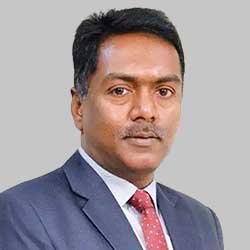 Dilip Jose
Dilip Jose
Managing Director & CEO,
Manipal Hospitals
Healthcare sector is to be perceived as an ecosystem. While delivery of care is at the core, it is closely intertwined with other facets like nutrition, sanitation, safe drinking water, reduction in pollution, primary education, etc., to name a few. The government has been viewing it from that perspective, especially with wellness and prevention of disease as the focus. Therefore, the expectation from the Budget is for continuity of that framework and adequate focus as well as funding support for all components of the ecosystem to ensure that we progress on the goals of prevention and wellness.
 Ameera Shah
Ameera Shah
Promoter and Managing Director,
Metropolis Healthcare
The forthcoming Budget should serve as a driving force, channeling investments toward critical areas, such as innovation, research and development, technology, upgrading healthcare infrastructure, and bolstering patient safety measures.
Given the escalating burden of non-communicable diseases (NCDs), we emphasize the necessity for regular and inclusive screening and diagnostic programs, along with more skilling courses for health professionals to attract as well as upskill talent in the diagnostic space. Additionally, we strongly advocate for the government’s consideration to implement a zero-percent GST on diagnostic services and facilitate refunds for GST paid on inputs.
Recognizing that 60 percent of India’s diagnostics are reliant on imports, it becomes paramount for the government to rationalize import tariffs on healthcare products. Low-cost financing schemes can enable private players to upgrade and add diagnostic infrastructure in Tier-II and Tier-III geographies.
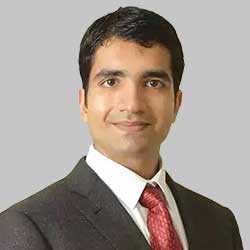 Viren Shetty
Viren Shetty
Executive Vice Chairman,
Narayana Health
The Indian healthcare sector’s growth is commendable, and it has benefited from dedicated policy and regulatory support from the government. Recognizing the need for providing universal health care, we expect the interim Union Budget 2024-25 to unveil a roadmap for addressing long-term infrastructure financing, increasing the number of medical and nursing colleges, and fiscal reforms in the health insurance sector. India needs a health insurance model that prioritizes preventive healthcare over procedures.
 Yatharth Tyagi
Yatharth Tyagi
Director,
Yatharth Group of Hospitals
On the list is GST rationalization, a longstanding demand of the sector. Currently, the sector faces a dichotomous GST structure. A 12-percent rate applies to primary and tertiary care services, while critical devices and equipment attract 18 percent or 28 percent GST. This increases capital costs and operational overheads for hospitals.
 Sugandh Ahluwalia
Sugandh Ahluwalia
Chief Strategy Officer,
Indian Spinal Injuries Centre
The hospital sector is in dire need of a dedicated regulator, and it is widely admitted that the establishment of a regulator, leveraging the expertise of organizations like the National Accreditation Board for Hospitals & Healthcare Providers (NABH), can significantly streamline compliance and enhance transparency.
A regulator with statutory powers and including a broader representation of government officials and sector experts would go a long way in creating a new healthcare ecosystem. A hospital sector regulator would be in a better position to eliminate entry barriers, create a single-window mechanism for over 100 compliances, and enhance ease of doing business, quality, and uniformity in the sector.
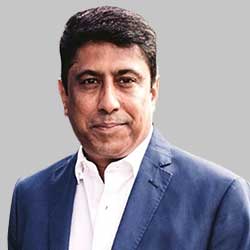 Prashant Arer
Prashant Arer
India Head,
Enbio Group AG
Union Budget should focus on further boosting research and development infrastructure and tax rationalization, gearing up for an aspirational USD 50-billion MedTech economy. The heavy import duties on medical equipment affect operational costs. The MedTech industry would be expecting a reduction of import duties, creating a win-win situation for both manufacturers and large hospitals, ultimately benefiting the patients.
The immediate focus should be on rationalizing import duties to ease the burden on hospitals and prevent passing on increased operational costs to patients. Currently, heavy import duties act as a penalty for patients, and we believe that rationalization is imperative for the sector’s growth and sustainability.
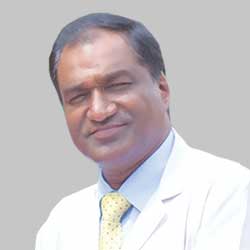 Dr Anand Bansal
Dr Anand Bansal
Medical Director,
Sri Balaji Action Medical Institute
Rational pricing is the key. Timely payments and transparent pricing are essential for hospitals to provide quality care. We look forward to clear guidelines from the government, addressing outstanding dues and revising rates under government schemes to ensure the viability of healthcare institutions.
The government’s proactive approach in addressing the healthcare sector’s needs is commendable. As we approach the Union Budget, we expect innovative policies that not only strengthen the sector but also ensure affordable and quality healthcare for the 1.4 billion citizens.
 Baldev Raj
Baldev Raj
Founder and Chief,
Prius Healthcare
The government needs to provide a robust policy backing, which is imperative to cultivate and streamline medical-value travel (MVT) to India, paving the way for its evolution into a well-organized sector. The government should create bilateral travel bubbles with countries contributing significantly to our MVT.
We will also be expecting some incentives in terms of land allocations, pricing, and tax rebates for greenfield hospital projects, similar incentives for PPP, and provisions for long-term credit facilities for the sector. Enacting stimulus packages, providing tax incentives, and facilitating priority sector lending to healthcare, especially for enhancing capacity in Tier-II and Tier-III cities, are essential. Incentives, accompanied by a promotional policy, can entice investments from medium and small hospitals into Tier-II and Tier-III cities.














